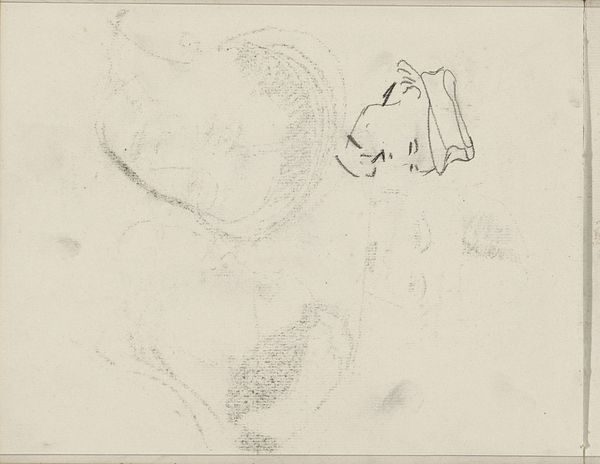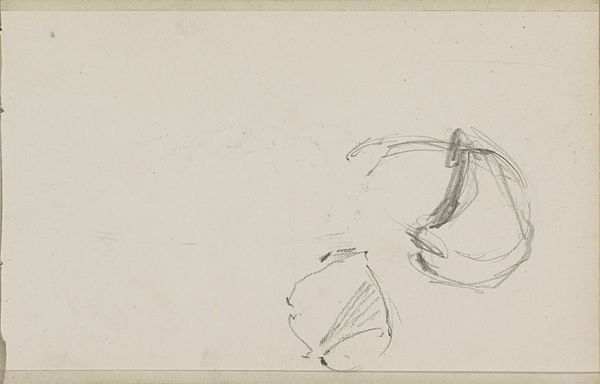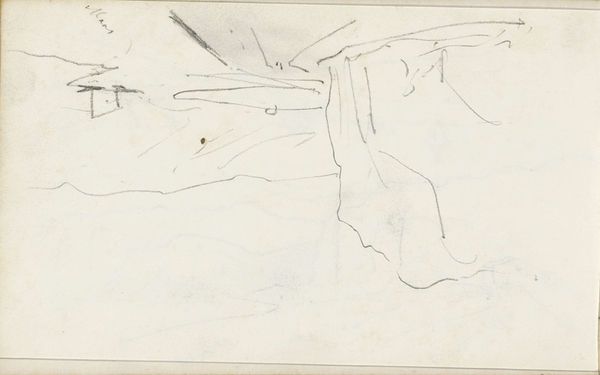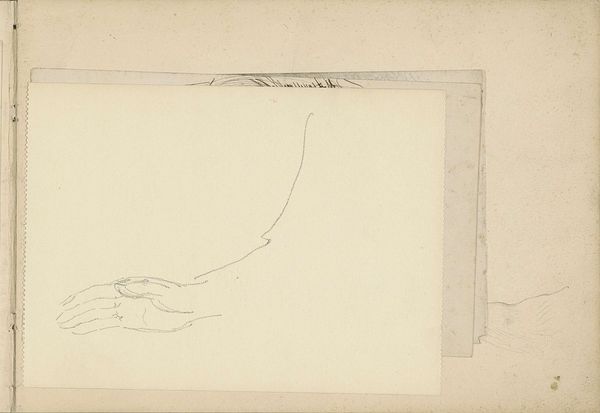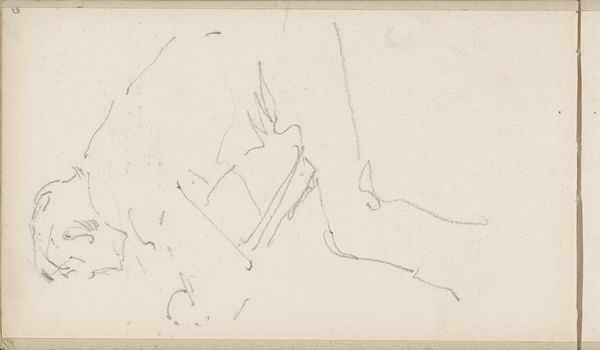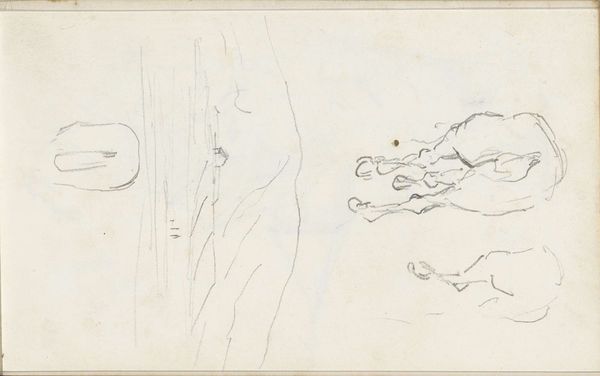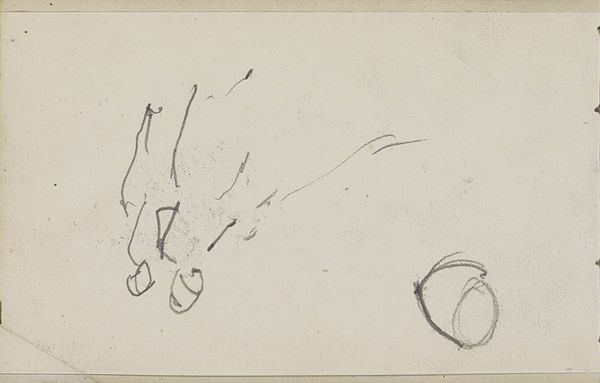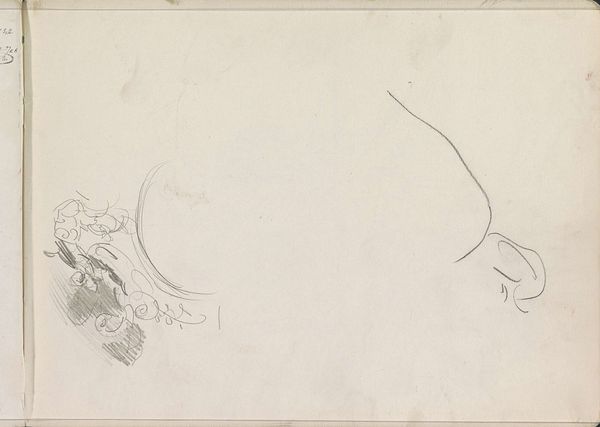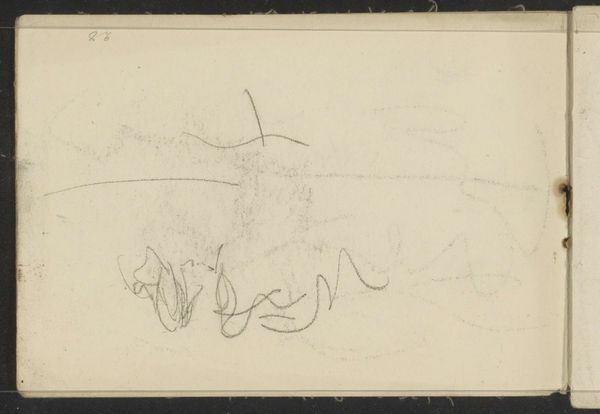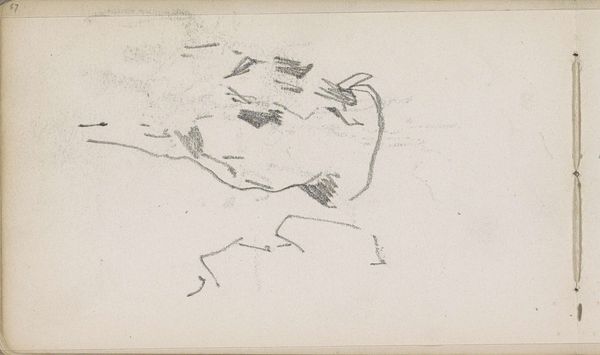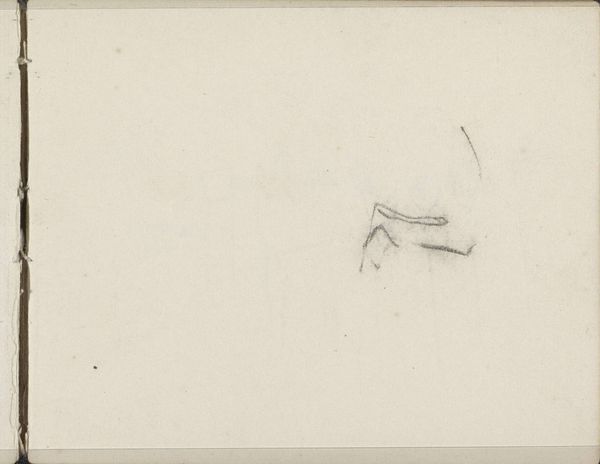
drawing, paper, pencil
#
drawing
#
light pencil work
#
art-nouveau
#
quirky sketch
#
figuration
#
paper
#
form
#
personal sketchbook
#
idea generation sketch
#
sketchwork
#
ink drawing experimentation
#
pen-ink sketch
#
pencil
#
line
#
sketchbook drawing
#
sketchbook art
#
initial sketch
Copyright: Rijks Museum: Open Domain
Editor: This is "Studie, mogelijk een ornament," a drawing on paper made around 1896 by Carel Adolph Lion Cachet, currently held at the Rijksmuseum. It’s a very light, almost ephemeral sketch. What do you see in this piece? Curator: This drawing offers a fascinating glimpse into the artist’s creative process and the cultural context of art nouveau. Consider the period; 1896 places it squarely within the burgeoning art nouveau movement. Do you notice how the artist explores flowing, organic forms typical of this style? These flowing lines often symbolized vitality, growth, and even feminine power – concepts embraced by artists eager to break away from the rigid structures of academic art. Editor: Yes, I can definitely see that! I hadn’t immediately linked it to feminine power though. It feels incomplete, almost like a doodle. Curator: Precisely. And that feeling is significant. This appears to be a study, perhaps from a sketchbook, an arena for unfettered exploration. Artists in this period increasingly used sketchbooks for generating and testing ideas outside formal academic constraints. Do you think that seeing such works in museums changes our perception of art and artistic labour? Editor: Absolutely! It demystifies the art-making process, suggesting it's not always about polished masterpieces. I appreciate that the museum is showing us the artist’s experimentations. Curator: I agree. Displaying such sketches reveals the messy, vital work behind finished pieces. Moreover, consider that institutions are now more eager to include preparatory sketches that once might have been discarded. They give the public access to initial thoughts and inspiration behind public-facing works. The Art Nouveau movement's own development is a product of an artist sub-culture rejecting tradition. So it almost completes a full circle of art being the artist’s initial creation through to the institution choosing to give that space value in and of itself. Editor: I see it so differently now! It’s about more than just aesthetics, it's a story of artistic freedom and how museums shape what we value. Curator: Exactly! Thinking about that interplay reveals the many complex layers shaping the art world.
Comments
No comments
Be the first to comment and join the conversation on the ultimate creative platform.
